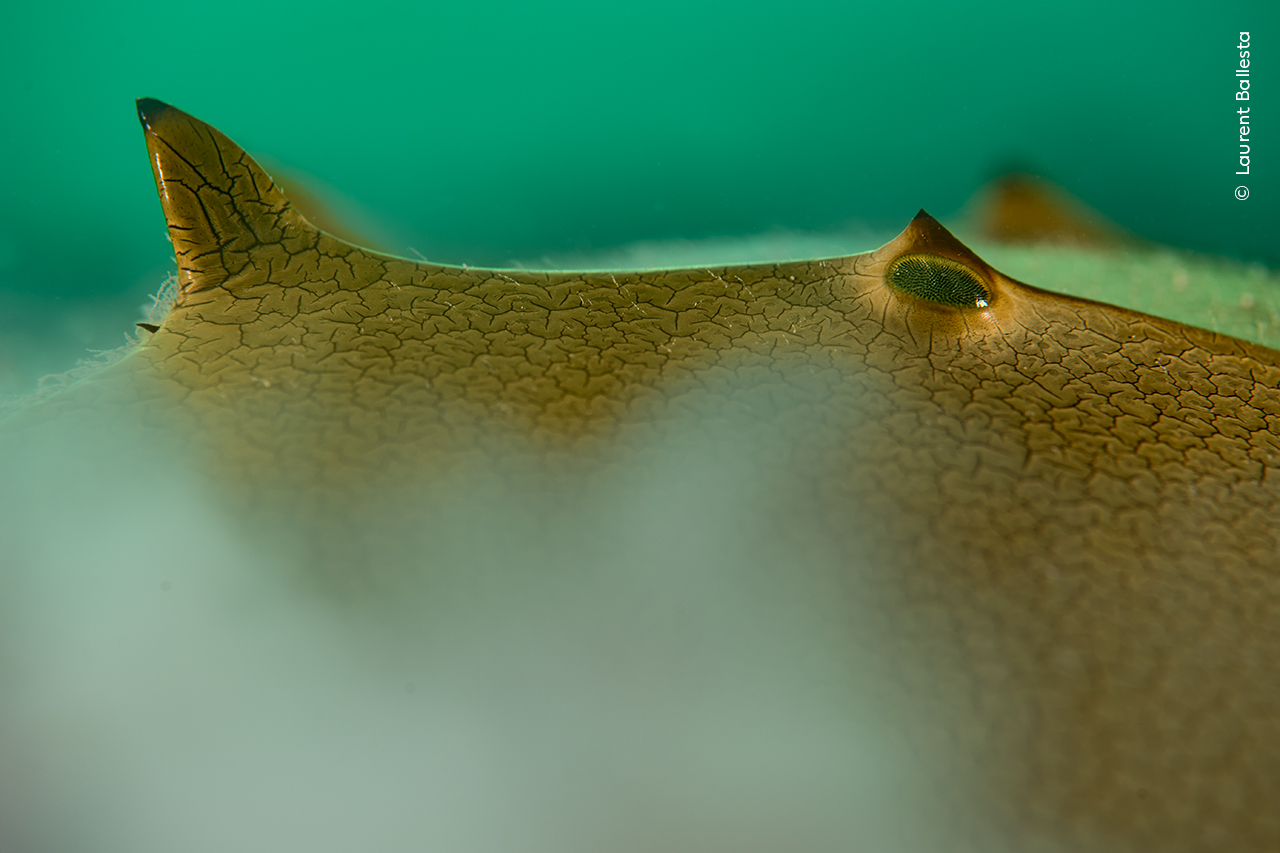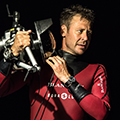Make a donation
The Museum is a charity and we rely on your support.
Make a donation today and support our 350 scientists who are working to build resilient habitats, protect vulnerable species and secure a sustainable future for our planet.

Laurent Ballesta (France) goes looking for horseshoe crabs in the protected waters of Pangatalan Island, the Philippines.
With clouds of mud billowing up from the seabed and resettling slowly, it took several attempts before Laurent achieved this shot, showing one of the horseshoe crab’s eyes, with its emerald pseudo-pupil.
Unlike their nearest relatives - arachnids and sea spiders - horseshoe crabs have two compound eyes, one on either side of their carapaces. Their vision is enhanced by seven additional simpler eyes. Five are located on the surface of the carapace, and two are underneath, by the mouth. These two may help the horseshoe crab orientate when swimming.

France
Laurent has authored 13 photography books on underwater wildlife. As co-founder of Andromède Océanologie, he’s been leading major expeditions for 10 years. He illustrates the underwater world as both a naturalist and an artist, whether that be capturing the first images of a coelacanth taken by a diver at a depth of 120 metres, documenting 700 sharks off Fakarava hunting at night or photographing the deepest and longest dive in Antarctica.
Help us harness the power of photography to advance scientific knowledge, spread awareness of important issues and nurture a global love for nature.


